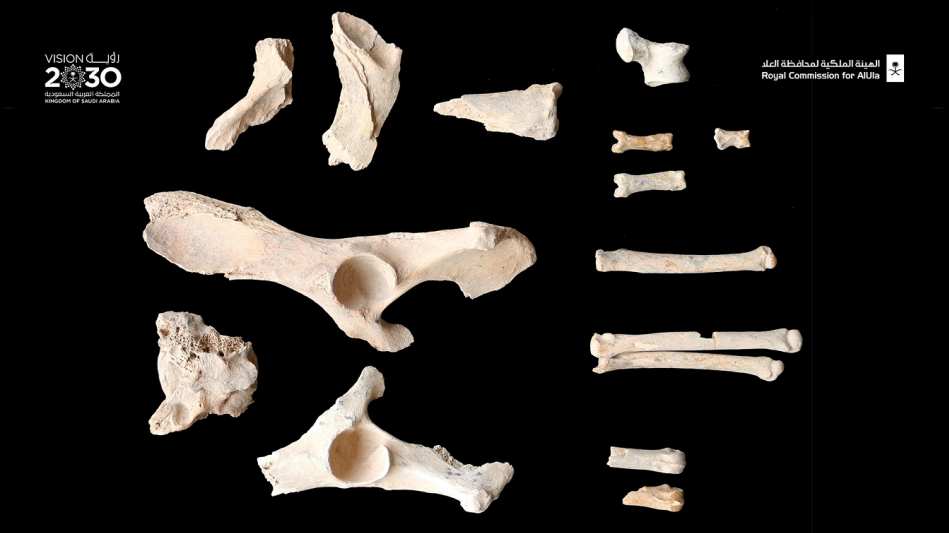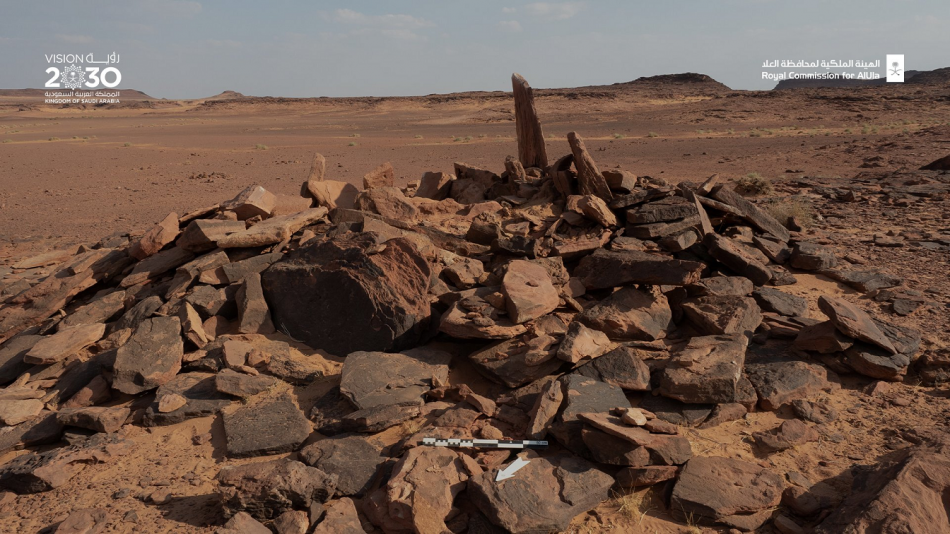Archeology dating back to the Chalcolithic period was discovered in Al-Ula

A team of archaeologists in Al-Ula Governorate, northwest of Saudi Arabia, specifically in Al-Ula Governorate, found the oldest evidence of dogs that coexisted with humans in the Arabian Peninsula, through a comprehensive archaeological survey and excavation of the Royal Commission for Al-Ula Governorate within the existing research and exploration projects in the province.
The researchers found bones belonging to a dog in a cemetery that is one of the oldest burials identified in the Kingdom, which is almost contemporaneous to those discovered and dated to the far north in the Levant, where evidence indicates that the oldest use of the burial was in about 4300 BC and the burial continued to be used. For a period of more than 600 years, during the Neolithic - Chalcolithic period, which is the oldest evidence of the existence of dogs that were familiar with the ancient inhabitants of the region in the Arabian Peninsula.
“What we're finding is going to make a paradigm shift in the way we look at periods like the Neolithic period in the Middle East,” said Melissa Kennedy, assistant director of the Aerial Archaeological Survey in Al-Ula. Information such as the time period used for family burials for hundreds of years is a recent matter at the level of scientific discoveries about the Neolithic period in the Arabian Peninsula.
For his part, Hugh Thomas, director of the archaeological aerial survey project in Al-Ula, said that the archeology of Al-Ula is the starting point that will contribute to revealing the extent of its importance to the stages of human development in the Middle East.
It is mentioned that the earliest evidence of dog domestication was discovered in the Arabian Peninsula, a thousand years after this evidence. The results will be published in the Journal of Field Archeology.
The joint project team includes Saudi, Australian and European members, and their efforts focused on two burial sites dating back to the fifth and fourth millennium BC and located 130 kilometers from each other, one of which is located in volcanic heights, and the other in rough and arid lands. The two sites were above ground in earlier periods, which is unique in the history of the Arabian Peninsula. The team discovered the sites using satellite imagery, then aerial photography from a helicopter, and began field work in late 2018.
The team also found 26 pieces of dog bones, along with the bones of 11 people, six adults, a teenager and four children, at the first site in the volcanic highlands, and this organism was of great importance in the life of its owner to the point that upon death it was buried with him. After collecting the bones, the team noticed signs of arthritis on the dog’s bones, indicating that the organism lived with humans until middle age or old age.
Dog bones have been dated to the period from 4,200 years to 4,000 BC.
The researchers believe that Al-Ula is a largely unexplored area located in a part of the world that contains an ample archaeological stock of outstanding scientific value. It is noteworthy that the Discovery Channel will present a new program on ancient architecture in the Arabian Peninsula, which will start on March 31, in reference to the archaeological evidence discovered in succession in the region.
This comes as part of the Royal Commission’s commitment to highlighting the history of Al-Ula and the heritage and nature endowed by God, and preserving it in accordance with the best international standards and practices. This discovery also strengthens the vision of Al-Ula, to be an open museum, in line with the goals of the Kingdom’s Vision 2030 in reviving heritage sites and monuments, which It strengthens the kingdom's prominent position on the map of human civilization.




